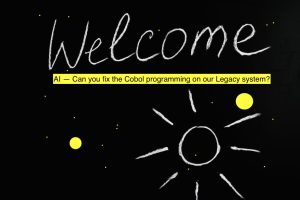Can AI solve the Boomer-aged programming language on Legacy systems?

Can AI solve the Boomer-aged programming language on Legacy systems?
Business IT leaders are beginning to receive assistance from generative AI in updating their Legacy IT systems — some of which are heavily loaded with code from the Cobal programming language. As the Wall Street Journal puts it, “…a programming language that predates the Beatles.” As systems age and the developers familiar with Cobal hit retirement age a decade ago, companies are exploring generative AI to help “translate” the Legacy mainframe code into Java. And even Java will be 30 years old in 2025, and Python turn 30 in 2021.
Chief information officers (CIOs) have traditionally prioritized updating a company’s fundamental technology, which might involve switching to cloud computing platforms and updating software. However, this is even more important when CIOs try to control expenses and boost productivity in the current business environment.
Over the past year, GitHub, Amazon, Google, IBM, and Microsoft have all released generative AI-based coding assistants to assist developers with tasks like creating code documentation and auto-completing code snippets. According to some developers, coding assistants increase productivity by roughly 25%, mostly in jobs similar to those that spell check and autofill aid users with when they write documents.
Rather than merely writing new code, which has been the most popular application to date, organizations like ADP are experimenting with updating their old code through the use of generative AI and related coding techniques.
IBM’s coding assistant was introduced in the fall of last year. It employs generative AI to assist developers in moving Cobol code to Java or keeping it in Cobol, which the company claims is still used by businesses today. IBM pioneered using massive data servers known as mainframes, which Cobol powers. Companies claim that although they need much care, they function correctly. IBM’s tool helps coders with new code suggestions — and allows them to ask question in plain, understandable English. This is all made possible because generative AI understands “the intent of the code,” making it possible to quickly turn old code into usable Java.
Featured Image Credit:



